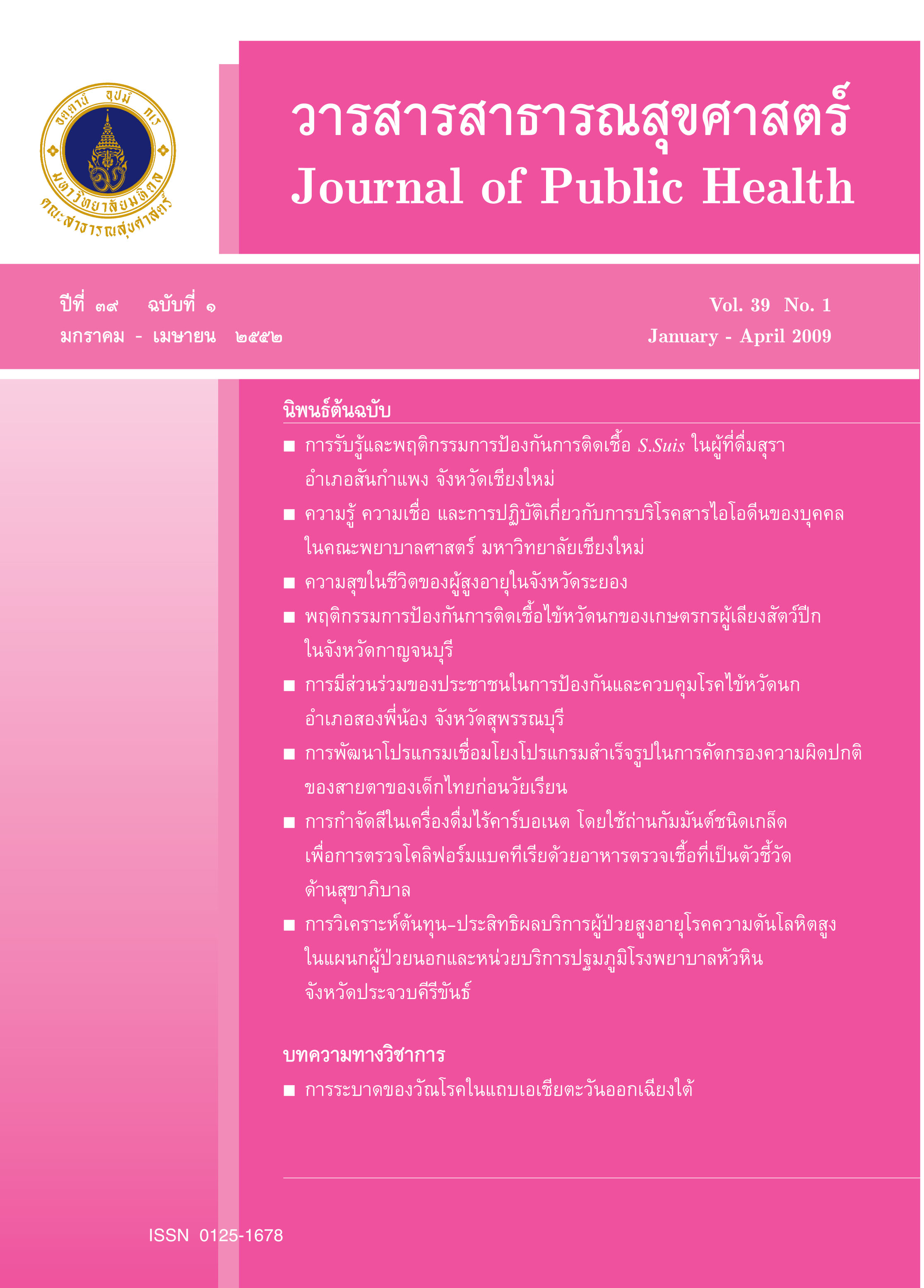ภาวะสุขภาพ และพฤติกรรมเสี่ยงต่อสุขภาพของนักศึกษามหาวิทยาลัยแม่ฟ้าหลวง
Keywords:
Health status, health risk behaviors, students, ภาวะสุขภาพ, พฤติกรรมเสี่ยงต่อสุขภาพ, นักศึกษาAbstract
ABSTRACT
The purpose of this descriptive study was to compare the health status and health risk behaviors among male and female students at Mae Fah Luang University. One thousand four hundred and thirty four samples from four academic years were selected by the accidentally sampling method. The modified Youth Risk Behavior Survey Questionnaire with accepted validity and reliability was used. Data were analyzed by frequency, percentage, mean, standard deviation and Chi square test. Results showed that 50.2% of subjects were female and 49.8% were male with average age of 20.15 ± 1.19 years. In terms of health status, female students reported higher numbers of sickness as well as overweight and obese level in body mass index than male. Female students exercised by means of brisk walking while running in male. Both female and male students had the same health risk behaviors such as not wearing a helmet, riding with a alcohol drinking driver, being depressed and experiencing a suicidal attempt. Male students had higher health risk behaviors than female in terms of driving/riding a vehicle after alcohol drinking, smoking a whole cigarette, and having casual sex. However, higher numbers of female students reported they did not practice any contraceptive methods as male students did. The study suggests that the university should cooperate with students’ families in initiating appropriate measures to reduce the health risk behaviors of the students.
Key words: Health status, health risk behaviors, students
Downloads
Issue
Section
License
Creative Commons License CC-BY-ND


